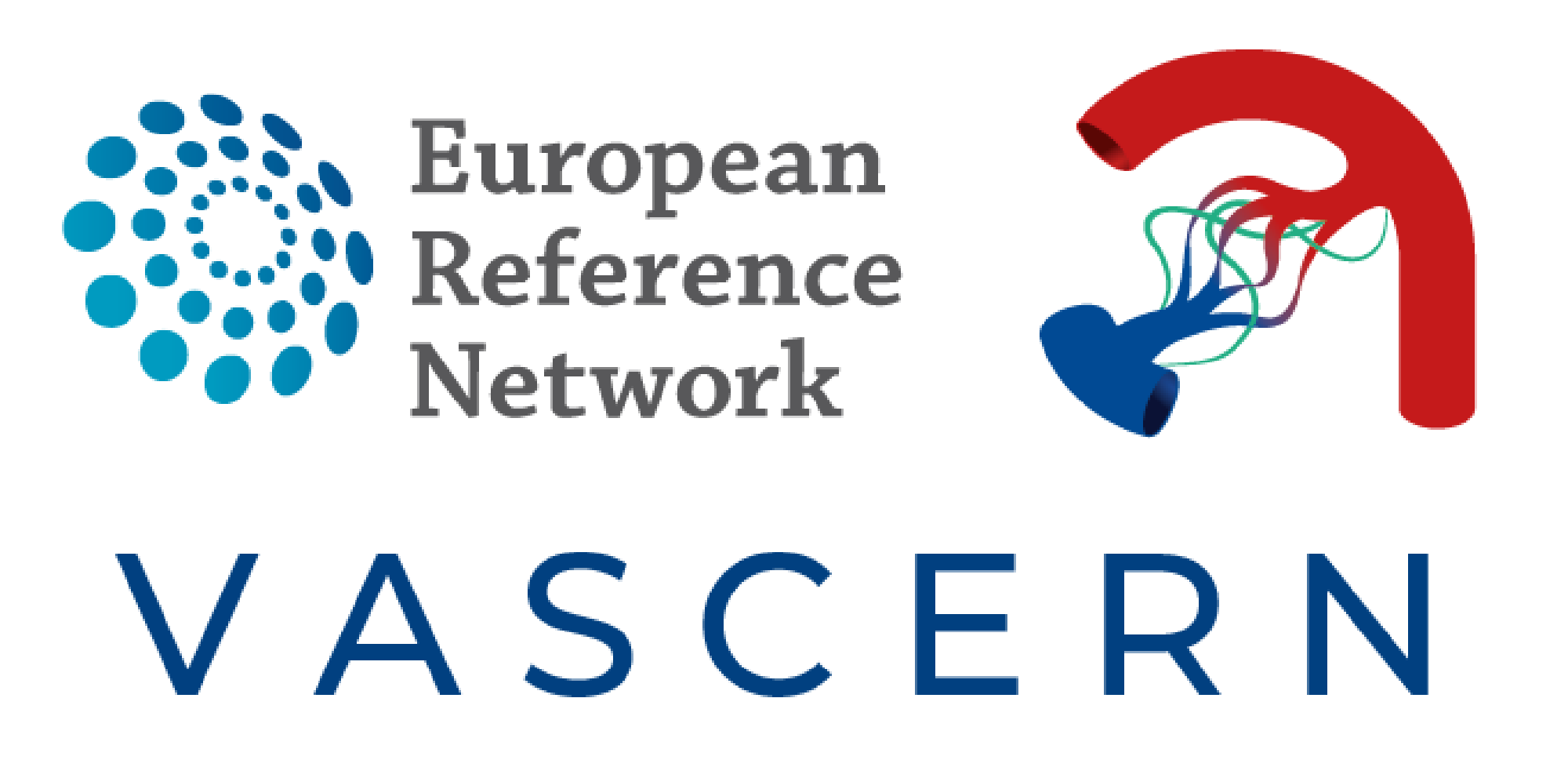Overview
Heritable Thoracic Aortic Disease (HTAD) covers disease entities with as common denominator Thoracic aortic aneurysms or – dissections that are familial and/or caused by genetic defects. Both syndromic and nonsyndromic entities exist. Although the number of genes involved in HTAD is steadily increasing, a large number of patients/families with HTAD have no identifiable defect, indicating that other genes must be involved. Genetic defects identified so far have can be categorized into (1) genes encoding components of the extracellular matrix (FBN1, MFAP5, MAT2A); (2) genes encoding components of the TGFbeta signaling pathway (TGFBR1/2, TGFB2/3, SMAD2/3); (3) genes encoding components of the smooth muscle cell contractile apparatus (ACTA2, MYH11, MYLK, PRKG1). Clinical entities covered by this WG include:
- syndromic entities such as Marfan Syndrome (ORPHA558), Loeys Dietz Syndrome (ORPHA60030), Aneurysm Osteoarthritis syndrome (ORPHA284984), Arterial tortuosity syndrome (ORPHA3342), Multisystemic smooth muscle dysfunction syndrome (ORPHA404463) and Neonatal Marfan syndrome (ORPHA284979)
- As well as nonsyndromic entities such as Familial Thoracic Aortic Aneurysms Dissections (Familial TAAD) (ORPHA91387), Familial aortic dissection (ORPHA229),
- caused by pathogenic variants in
- actin, alpha 2, smooth muscle, aorta – ACTA2
- fibrillin 1 – FBN1
- microfibrillar associated protein 5 – MFAP5
- myosin, heavy chain 11, smooth muscle – MYH11
- myosin light chain kinase – MYLK
- protein kinase, cGMP-dependent, type I – PRKG1
- SMAD family member 3 – SMAD3
- SMAD family member 2 -SMAD2
- transforming growth factor beta 2 – TGFB2
- transforming growth factor beta 3 – TGFB3
- transforming growth factor beta receptor I – TGFBR1
- transforming growth factor beta receptor II – TGFBR2
For more information on the various diseases – click here
While our knowledge of clinical and genetic characteristics of MFS and related HTAD has increased substantially, already resulting in a better outcome in these patients, further efforts are needed to improve management and increase awareness of these rare disorders since knowledge of the disease appears to be the most important factor influencing outcome. Next stages require formal acknowledgement, status and funding to ensure personalised medicine and therapeutics.
Bases for the following estimated incidence and prevalence numbers: 500 Million inhabitants within European union with about 6 million newborns annually.
| Sub-thematic areas of expertise | Rare of complex disease(s) or condition(s) or highly specialized interventions | Code/ICD/Orphacode/Group of codes | Incidence (Number of cases/year) (in the EU) | Prevalence (in the EU) |
|---|---|---|---|---|
| HTAD | Aneurysm-Osteoarthritis Syndrome | ICD 10: 171, ORPHA284984 | 60 | 5000 |
| HTAD | Arterial Tortuosity Syndrome | ICD 10: 171, ORPHA3342 | unknown | unknown |
| HTAD | Familial bicuspid aortic valve | ICD 10: 171, ORPHA402075 | unknown | unknown |
| HTAD | Familial thoracic aortic aneurysm and aortic dissection | ICD 10: 171, ORPHA91387 | 1200 | 100000 |
| HTAD | Loeys Dietz Syndrome | ICD 10: 171, ORPHA60030 | 180 | 15000 |
| HTAD | Marfan Syndrome | ICD 10: 171, ORPHA558 | 3300 | 150000 |
| HTAD | Multisystemic smooth muscle dysfunction syndrome | ICD 10: 173, ORPHA404463 | ||
| HTAD | Rare disease with thoracic aortic aneurysm and aortic dissection | ICD 10: 171, ORPHA285014 | unknown | unknown |
